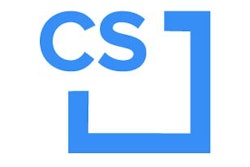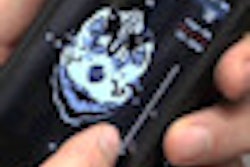
Radiology professionals seeking to deploy Apple's new iPad for viewing medical images will find a lot to like in the latest iteration of the tablet computer, including its high-resolution Retina display, which gives the device the resolution of a 3-megapixel PACS monitor.
While noting that the new iPad still has room for improvement, several prominent researchers and vendor representatives contacted by AuntMinnie.com believe the tablet's new capabilities offer considerable added value in radiology. Apple released the third-generation iPad on March 16.
"The higher-resolution display and faster 4G speed will only spur on the wave of referring doctors and radiologists who are beginning to depend on these mobile devices for access to images when not near a workstation," said Dr. David Hirschorn, director of radiology informatics at Staten Island University Hospital and a research fellow in radiology at Massachusetts General Hospital (MGH) and Harvard Medical School.
Generating particular excitement is the new iPad's Retina display, which has raised the tablet's resolution to the level of a 3-megapixel PACS monitor. The new iPad offers 2,048 x 1,536-pixel resolution at 264 pixels per inch, up from the iPad 2's 1,024 x 768-pixel resolution at 132 pixels per inch.
The higher resolution will enable large-format studies such as some computed radiography (CR) and digital radiography (DR) exams to be read in their native resolution without having to scroll around the tablet.
"This will allow radiologists to get a global impression of the image, something that was not possible with lower-resolution devices," said Dr. Mark McEntee, a senior lecturer and director of honors at the University of Sydney's Brain and Mind Research Institute.
As a result, image review times on the new iPad ought to be equivalent to using PACS monitors -- and perhaps faster than with the commodity displays often used for review, said Pierre Lemire, president and chief technology officer of Calgary Scientific, which has received U.S. Food and Drug Administration (FDA) clearance for use of its ResolutionMD mobile software in diagnostic applications.
"[This would make] mobile devices more and more attractive for image review and diagnosis," Lemire said.
Hirschorn noted that the largest CR images at MGH are actually larger than the virtual "zoom and pan" space available on the new iPad's predecessor, the iPad 2.
"I imagine that the virtual space of [the new iPad] will likely accommodate these large images now, in measure commensurate with the larger physical screen resolution," Hirschorn said.
Panning still required?
While the new iPad will greatly reduce any concerns over the image resolution of these devices, the majority of x-rays will still require some panning at full-resolution, said Mark Cain, chief technology officer of MIM Software. MIM Software's Mobile MIM application was the first image viewing application to receive FDA clearance for diagnostic use on the iPhone and iPad, and it has also received clearance for use with radiography studies.
"In order to get 510(k) clearance for x-rays, we had to demonstrate [effectiveness] on earlier devices that required significantly more panning, but with this device, Apple has opened a new chapter for the practical usability of these high-resolution images," Cain said.
The new iPad takes image quality to a whole new level for iOS devices, he said.
"The contrast response of the new iPad is on par with the iPad 2, which is very good," Cain said. "When the new iPad is calibrated for proper display, the images are gorgeous."
The new iPad could also offer the potential for patient education, allowing clinicians to sit down with patients and discuss their studies in full "high-resolution" detail, said Dr. Frederick Weiss of the University of Maryland. Potential may also exist for using the new iPad for mammography.
"With that said, there should be extensive testing of phantoms and controls prior to any mammographic implementation clinically," Weiss said. "This testing will start soon at the University of Maryland."
Not everyone believes the increased resolution will provide substantial benefit in image viewing applications, however. The increased resolution of the new iPad isn't that relevant for tomographic images such as CT, MRI, SPECT, and ultrasound that have maximum resolution of 512 x 512, said Dr. Osman Ratib, professor and chair of medical imaging and information sciences at the University Hospital of Geneva.
"For conventional radiology like chest x-rays or trauma images, the new display may be better than the iPad 2," Ratib said. "But physicians will always zoom on relevant body parts, so the intrinsic display resolution is less of an issue."
Speed matters
Ratib believes the new iPad's processor speed and CPU/GPU performance will affect image viewing performance. The new iPad utilizes the A5X chip, which provides quad-core graphics processing capability.
The new processor will allow applications to perform more tasks, such as resampling large image sets in oblique planes, real-time 3D, and volume rendering, Ratib said.
"These tasks were not quite possible on the previous generation of iPads because they were too slow," he said.
As a result, complex image processing tasks on the iPad have typically been performed remotely; a thin client residing on the iPad provided image manipulation functionality. The new iPad's processing capabilities will particularly benefit the OsiriX open-source image viewing application, said Ratib, a founding member and president of the nonprofit OsiriX Foundation.
"With OsiriX, we choose to have the application and data residing on the iPad itself, freeing the user from the need to be constantly connected through wireless network," Ratib said. "With the new iPad, OsiriX will be able to do more processing tasks such as real-time multiplanar reformatting and image processing."
The new processor will improve the iPad's speed for performing simple image processing tasks, as well as image-oriented functions such as contrast and brightness enhancement, McEntee said.
"The previous iPad became quite jumpy when changing window width and levels on medical images," McEntee said. "I think this will be improved by the new processor."
The improved processor will provide the horsepower to drive the larger display at the frame rates that radiologists will expect when navigating through an image stack, Lemire said.
4G
The new iPad's support for 4G LTE networking capabilities will be make it easier to download images and improve workflow for those not connected to Wi-Fi, Weiss said. The iPad 2 only supported 3G.
Support for 4G was long overdue and particularly important: The new iPad's increased resolution had the potential to actually slow down remote viewing of radiological images because it takes longer to fill such a display, Hirschorn noted.
"[4G] is much, much faster, provided you are in a place that has access to it," Hirschorn said. "
Client-server-based mobile applications will also benefit from the enhanced bandwidth provided by 4G LTE, Lemire said.
"Interactive frame rates should improve, which will enhance the user experience in terms of responsiveness," he said.
Looking ahead
While the new iPad offers a number of important advances that promise to improve its utility for viewing images, many believe there is still room for improvement. For example, display calibration remains an issue with the new tablet.
"Apple still keeps its video subsystem closed, meaning that you can't calibrate the display to DICOM with a utility completely separate from the viewing application the way you can on a desktop," Hirschorn said. "This makes achieving DICOM conformance more challenging, but it is achievable anyway by coupling such utilities with the viewing software."
This becomes a more complex process as it requires tighter cooperation between PACS software vendors and display vendors. But this is happening, Hirschorn said.
"Were Apple to open up the video subsystem to DICOM calibration, this issue would be solved in a more straightforward manner," he said. "But it hasn't happened yet and probably won't because it is not part of their strategy to give up that degree of control."
Because one of the biggest challenges to radiological image viewing on mobile devices is the wide range of ambient lighting environments in which the devices are used, it would be helpful if the iPad could provide access to ambient light-sensing hardware and allow hardware calibration to the DICOM Grayscale Standard Display Function (GSDF), Lemire said.
"These capabilities are currently fulfilled with visual calibration, but doing it as part of the device would bring the tablet displays closer to fulfilling their full potential as medical display devices," Lemire said.
While the new iPad offers 1 GB of RAM (up from 512 MB in the iPad 2), the relative lack of system memory limits its use to 2D image display when image slices are downloaded to the device, Lemire said.
Ratib said he would like to see larger storage capacity, better file management, more CPU/GPU power, and, mostly, more openness in the operating system to allow easier data management, file sharing, and synchronization without being locked into Apple's iCloud service or proprietary restrictions in data transfer.
"But I am sure more of that will come with the next generations," Ratib said. "I am already looking forward to the iPad 4."
The inclusion of encryption software would also be nice, as would calibration software and brightness improvements, McEntee said.
Cain, however, said that the brightness of the displays is very adequate. If brightness were to get any better in the future, this would likely be achieved by darkening the black, he said.
Potential impact
With earlier generations of the iPad already being used extensively by the medical community to view and manipulate medical images, the new iPad's improved performance and screen quality will certainly help, Ratib said.
Although it's unlikely to be used as a standalone primary diagnostic monitor due to its small screen size, the new iPad could be used by teleradiology practitioners as a mobile PACS that can connect to an HDTV, Weiss said.
"It would be a unique interface, and with the updated dictation abilities built into the new iPad, the ability to travel and work becomes that much closer," Weiss said. "The dictation system will need to be refined and customized to the language of a radiologist, a software issue I'm sure will be tackled in the near future."
Weiss also expects that PACS vendors will develop software specifically for the new iPad's Retina display, thus improving mobile access to images.
"The ball is in their court," Weiss said. "The hardware capabilities are all there."
As a result, it remains to be seen if the new iPad will be the breakthrough device that brings mobile clinical image viewing to the mainstream, Weiss said.
"[That] will require truly integrated software within each setting, including HIPAA compliance and increased access to 4G [if Wi-Fi is unavailable]," Weiss said.
Weiss would also like to see a plug-and-play portable PACS/dictation system with one-touch access to Apple's FaceTime videoconferencing application, giving clinicians access to critical findings. Another hoped-for feature would be one-touch emailing of reports to both clinicians and patients, and one-touch access to relevant labs and clinical notes.
"To quote the 'Six Million Dollar Man,' 'We have the technology ...' to build a new radiologist," he concluded.




















